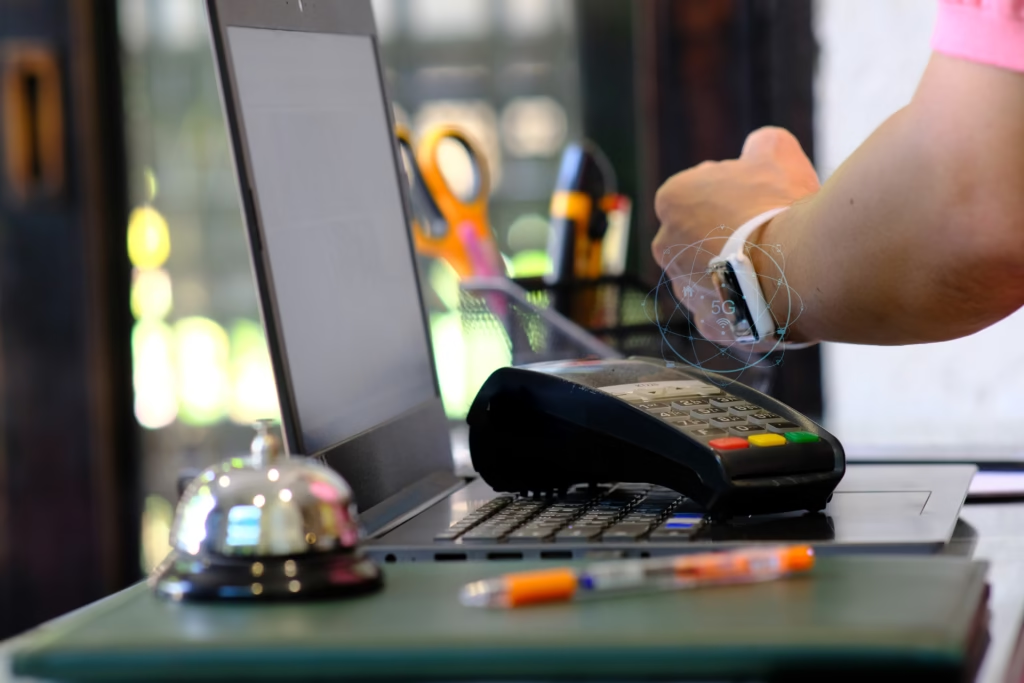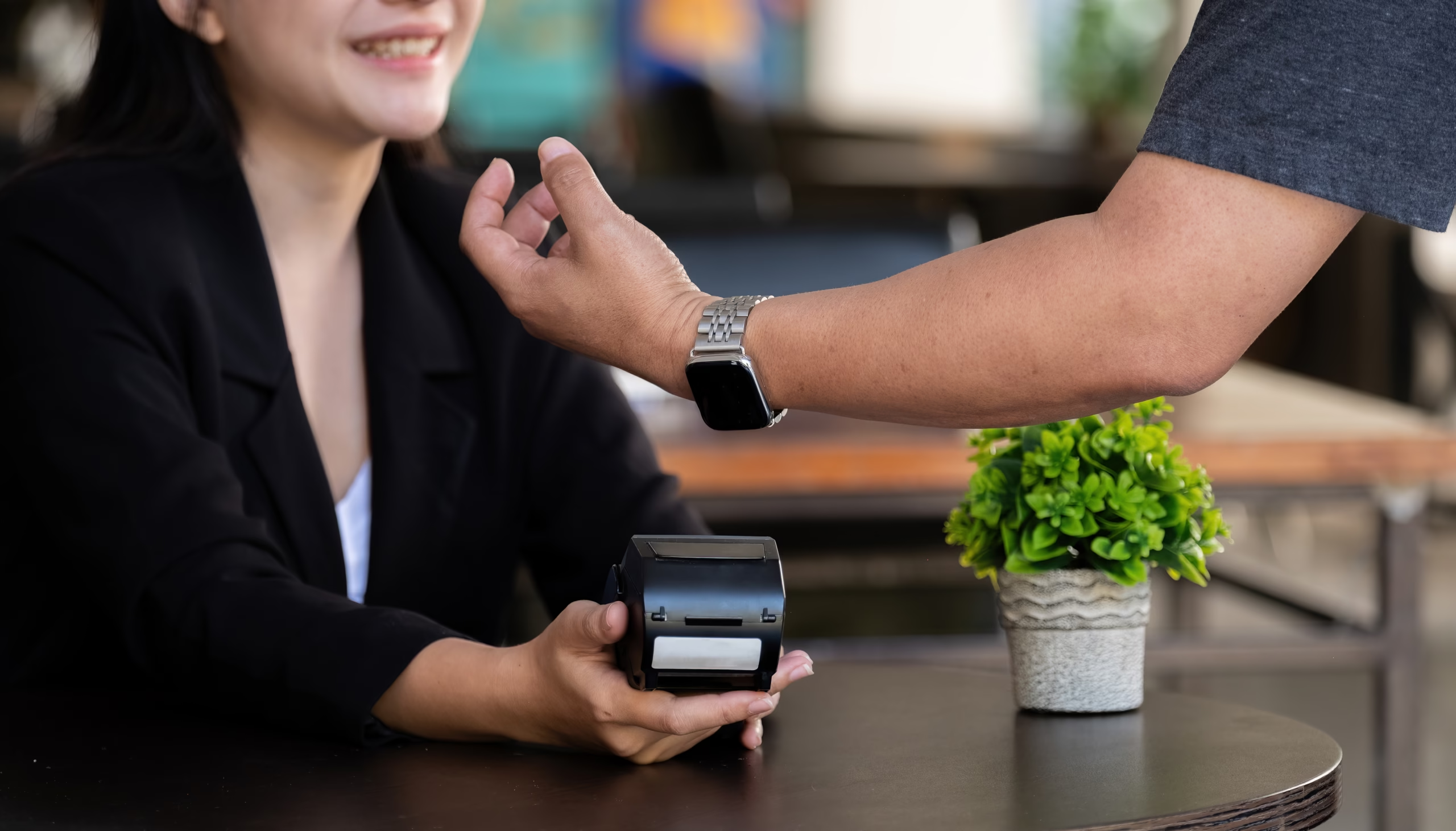Wearable payment devices are small, portable gadgets that allow you to make payments seamlessly. These devices are embedded with payment technology, enabling contactless transactions. From smartwatches to rings and even fitness trackers, wearable payment devices are transforming how we pay for things. Although, They eliminate the need for cash, cards, or even smartphones, making transactions faster and more convenient.
How Do Wearable Payment Devices Work?
Wearable payment devices use contactless payment technology, often powered by NFC (Near Field Communication) or RFID (Radio Frequency Identification). However, When you tap the device on a payment terminal, it securely transmits payment data to complete the transaction. Some devices require a connection to your smartphone or bank app for setup, while others can work independently. Although, Security is enhanced with features like tokenization and encryption, ensuring your personal information remains safe.
The Rise of Wearable Payment Devices in FinTech
The fintech industry has embraced wearable technology as a game-changer. Although, With the increasing demand for cashless and contactless payments, these devices have gained significant traction. However, Major players like Apple, Samsung, and Fitbit have integrated payment capabilities into their products, making wearables a mainstream payment solution. Post-pandemic, the shift toward hygiene-focused solutions has further accelerated their adoption globally.
Top Benefits of Using Payment Devices
- Convenience: No need to carry cash or cards.
- Speed: Transactions take seconds, reducing checkout times.
- Security: Advanced encryption keeps your data protected.
- Accessibility: Great for people who prefer minimalistic solutions.
- Versatility: Wearables can serve multiple purposes, from fitness tracking to payment.
These benefits make wearable payment devices a practical choice for modern consumers.

Popular Types of Wearable Payment Devices in 2024
The wearable payment device market offers diverse options tailored to different needs.
- Smartwatches: Devices like the Apple Watch and Samsung Galaxy Watch dominate this category.
- Fitness Trackers: Fitbit and Garmin combine health tracking with payment features.
- Smart Rings: Lightweight and stylish, brands like Oura are pioneering this space.
- Contactless Wristbands: Perfect for festivals and events.
- Payment Glasses: A futuristic option gaining traction in niche markets.
These devices offer flexibility and cater to varying lifestyles.
Wearable Payment Devices vs. Traditional Payment Methods: Which Is Better?
Wearable payment devices and traditional methods each have pros and cons.
- Speed: Wearables are faster, requiring just a tap.
- Convenience: No need for wallets or purses.
- Security: Enhanced encryption often makes wearables safer.
However, traditional methods like cash are still preferred in rural areas or places without contactless infrastructure. Although, The choice depends on individual preferences and accessibility.
Why Payment Devices Are Gaining Popularity Worldwide
Wearable payment devices are becoming a global trend due to their convenience and efficiency. Although, They are particularly popular among tech-savvy consumers who value innovation. In urban areas, the widespread availability of contactless terminals has boosted their appeal. Additionally, banks and fintech companies are offering exclusive incentives to wearable users, such as discounts or reward points, further driving adoption.
Payment Devices in Everyday Life: Real-World Use Cases
These devices fit seamlessly into daily routines:
- Shopping: Tap and go at grocery stores or malls.
- Public Transport: Use wearables to pay for subway rides or buses.
- Fitness and Dining: Pay at gyms or restaurants without carrying your wallet.
- Travel: Use wearables abroad without worrying about currency exchange.
They simplify payments across diverse scenarios, making life hassle-free.
The Role of Contactless Technology in Wearable Payment Devices
Contactless technology is the backbone of wearable payment devices. However, NFC allows secure and fast transactions by creating a unique token for each payment. Although, This reduces the risk of fraud or data theft. With the increasing number of contactless terminals, wearables are now more functional than ever. This technology ensures compatibility, making wearables a versatile payment tool worldwide.
The Future of Wearable Payment Devices in FinTech Innovation
The future of wearable payment devices looks promising. Advances in biometrics, such as fingerprint or heartbeat authentication, will make payments even more secure. However, Integration with blockchain technology could revolutionize transaction transparency. Moreover, as 5G networks expand, wearables will become faster and more responsive. Although, With increasing consumer demand and ongoing innovation, wearable payment devices are set to become a cornerstone of fintech.
By adopting wearable payment devices, we’re not just embracing convenience but also stepping into the future of seamless financial transactions. Are you ready to make the switch?

